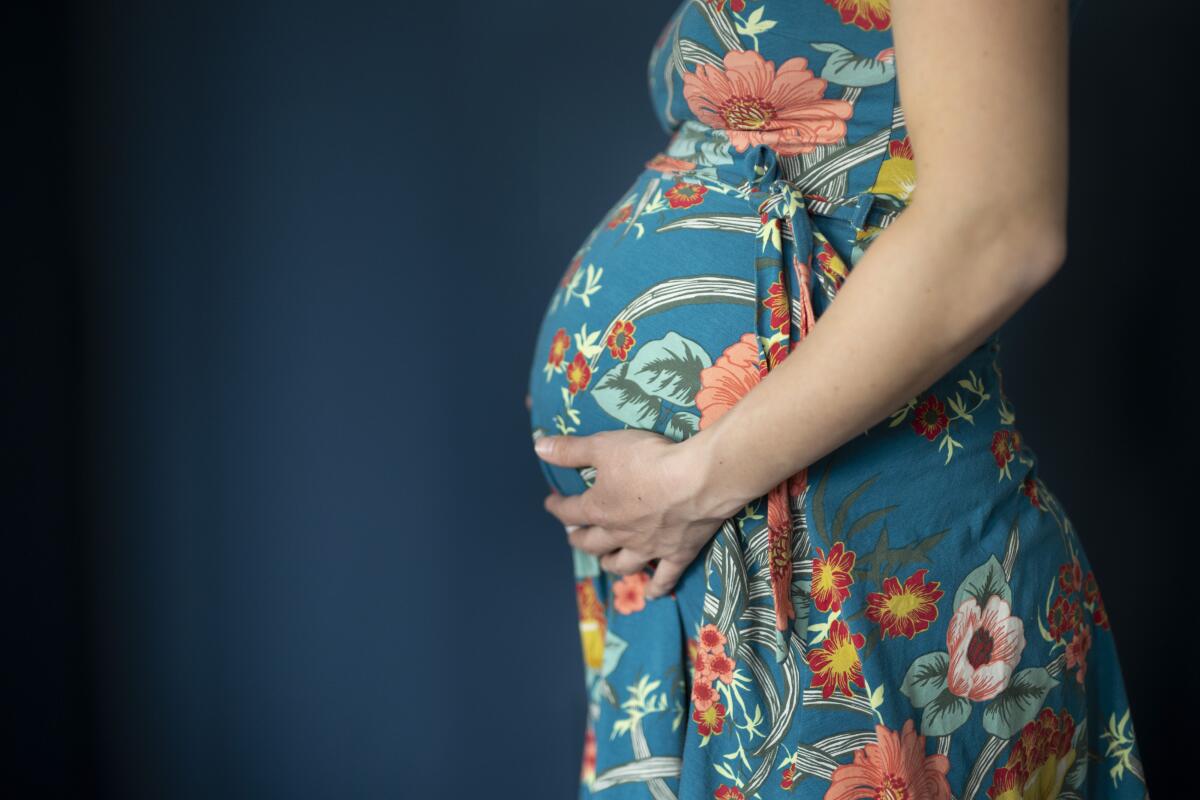Pregnant? Researchers want you to know something about fluoride

- Share via
Adding fluoride to drinking water is widely considered a triumph of public health. The Centers for Disease Control and Prevention says the cavity-prevention strategy ranks alongside the development of vaccines and the recognition of tobacco’s dangers as signal achievements of the 20th century.
But new evidence from Los Angeles mothers and their preschool-age children suggests community water fluoridation may have a downside.
A study published Monday in JAMA Network Open links prenatal exposure to the mineral with an increased risk of neurobehavioral problems at age 3, including symptoms that characterize autism spectrum disorder. The association was seen among women who consumed fluoride in amounts that are considered typical in Los Angeles and across the country.
The findings do not show that drinking fluoridated water causes autism or any other behavioral conditions. Nor is it clear whether the relationship between fluoride exposure and the problems seen in the L.A.-area children — a cohort that is predominantly low-income and 80% Latino — would extend to other demographic groups.
However, the results are concerning enough that USC epidemiologist Tracy Bastain said she would advise pregnant people to avoid fluoridated water straight from the tap and drink filtered water instead.
“This exposure can impact the developing fetus,” said Bastain, the study’s senior author. “Eliminating that from drinking water is probably a good practice.”
Dr. Kalyanam Shivkumar wants to surpass the anatomical atlas created by a fervent supporter of the Nazi regime whose work was fueled by the dead bodies of its victims.
About 63% of Americans receive fluoridated water through their taps, including 73% of those served by community water systems, according to the CDC. In Los Angeles County, 62% of residents get fluoridated water, the Department of Public Health says.
The data analyzed by Bastain and her colleagues came from participants in an ongoing USC research project called Maternal and Developmental Risks from Environmental and Social Stressors, or MADRES. Women receiving prenatal care from clinics in Central and South Los Angeles that cater to low-income patients with Medi-Cal insurance were invited to join.
Between 2017 and 2020, 229 mothers took a test to measure the concentration of fluoride in their urine during their third trimester of pregnancy. Then, between 2020 and 2023, they completed a 99-question survey to assess their child’s behavior when their sons and daughters were 3 years old.
Among other things, the survey asked mothers whether their children were restless, hyperactive, impatient, clingy or accident-prone. It also asked about specific behaviors, such as resisting bedtime or sleeping alone, chewing on things that aren’t edible, holding their breath, and being overly concerned with neatness or cleanliness.
Some of the questions the mothers answered addressed health problems with no obvious medical cause, including headaches, cramps, nausea and skin rashes.
Among the 229 children — 116 girls and 113 boys — 35 were found to have a collection of symptoms that put them in the clinical or borderline clinical range for inward-focused problems such as sadness, depression and anxiety. In addition, 23 were in the clinical or borderline clinical range for behaviors directed at others, such as shouting in a classroom or attacking other kids, and 32 were deemed at least borderline clinical for a combination of inward and outward problems.
What interested the researchers was whether there was any correlation between a child’s risk of having clinical or borderline clinical behavioral problems and the amount of fluoride in his or her mother’s urine during pregnancy.
They found that compared to women whose fluoride levels placed them at the 25th percentile — meaning 24% of women in the study had levels lower than theirs — women at the 75th percentile were 83% more likely to have their child score in the “clinical” or “borderline clinical” range for inward and outward problems combined. When the researchers narrowed their focus to children in the clinical range only, that risk increased to 84%, according to the study.
The researchers also found that the same increase in fluoride levels was associated with an 18.5% increase in a child’s symptoms related to autism spectrum disorder, as well as an 11.3% increase in symptoms of anxiety.
A study of interactions between military doctors and patients of various ranks confirms that people with higher status get resources at other people’s expense.
The amount of fluoride needed for mothers to go from the 25th to the 75th percentile was 0.68 milligrams per liter. As it happens, that’s nearly identical to the 0.7 mg per liter standard that federal regulators say is optimal for preventing tooth decay.
Bastain said that allowed the researchers to compare what might happen to children in two parallel universes: a typical one where their mothers consumed fluoridated water during pregnancy, and an alternate one where they didn’t.
“You can use it as a proxy for if they lived in a fluoridated community or not,” she said.
What that thought experiment shows is that children in the fluoridated community face a higher level of risk. That said, it’s not clear when that risk becomes high enough to be worrisome.
“We don’t know what the safe threshold is,” Bastain said. “It’s not like you can say that as long as you’re under the 75th percentile, there are no effects.”
The study authors’ concerns about the effects of fluoride on developing brains didn’t come out of nowhere.
The National Toxicology Program — a joint effort of the CDC, the National Institutes of Health, and the Food and Drug Administration — has been investigating the issue since 2016. In a report last year that reviewed an array of evidence from humans and laboratory animals, a working group concluded “with moderate confidence” that overall fluoride exposure at levels at or above 1.5 mg per liter “is consistently associated with lower IQ in children.”
Ozempic and other drugs raised the possibility of reversing the country’s obesity crisis. Doctors are frustrated that they’ve made health disparities worse.
The working group added that “more studies are needed to fully understand the potential for lower fluoride exposure to affect children’s IQ.”
A 2019 study of hundreds of mothers in Canada — where 39% of residents have fluoridated water — found that a 1-mg increase in daily fluoride intake during pregnancy was associated with a 3.7-point reduction in IQ scores in their 3- and 4-year-old children.
And among hundreds of pregnant women in Mexico, a 0.5-mg-per-liter increase in urinary fluoride went along with a 2.5-point drop in IQ scores for their 6- to 12-year-old children, researchers reported in 2017.
Bastain and her colleagues write their study is the first they are aware of that examines the link between prenatal fluoride exposure and neurobehavioral outcomes in children in the United States. The results are sure to be controversial, Bastain said, but there’s a straightforward way for pregnant people to reduce the possible risk.
“It’s a pretty easy intervention to get one of those tabletop plastic pitchers” that filter out metals, she said. “Most of them do a pretty good job of filtering out fluoride.”










